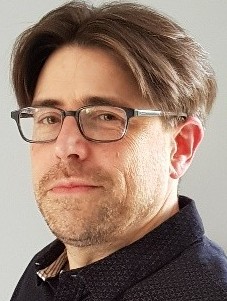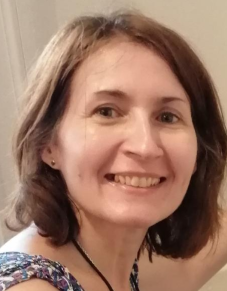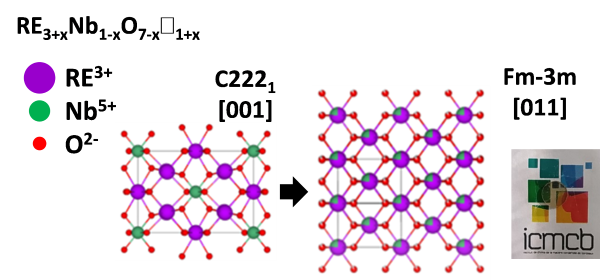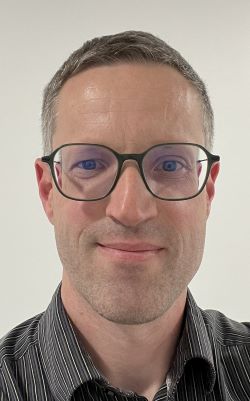Conférenciers invitésPr Alba Silipo Università degli Studi di Napoli Federico II Italy Pr Alba Silipo is a Full Professor of Organic Chemistry since 2020. She obtained her PhD at the University of Naples Federico Il in 2004. In 2005- 2006 She was EU postdoctoral Marie Curie Fellowship under the supervision of Prof. J. Jiménez-Barbero in CSIC, Madrid. She leads a research group of around 25 researchers at the University of Naples Federico Il that has significant and long-standing expertise in glycomics and Glycoscience. They focus on: i) the determination of structure and conformation of glycans (combined use of organic, carbohydrate and analytical chemistry, NMR spectroscopy, Mass spectrometry) ii) Structural biology approaches (NMR, computational and biophysical methodologies) to assess conformation of glycans and glycoconjugates and their 3D structures iii) Study of molecular recognition events in glycans-protein interactions by spectroscopy (Iigand- and protein-based NMR), biophysical, computational techniques and characterization of 3D complex. She is co-author of 190 publications and a Patent. She was awarded in 2019 of Carbohydrate Research Award for Creativity in Carbohydrate Chemistry, in 2017 European prize of the RSEQ Chemical Biology Division to young group leaders who contributed to the field of Chemical Biology, and in 2016, the IEIIS Nowotny Award. https://orcid.org/0000-0002-5394-6532 Abstract: The evaluation of the structure of biomolecules built up of carbohydrates is a very challenging task due to the inherent complexity of sugar chemistry, which also impairs any computerized/automated approach. Nevertheless, this is a fundamental mission devoted to understanding interaction events at atomic level, including host-guest cross-talk. The combined use of complementary, biophysical approaches, including NMR spectroscopy, computational and biophysical techniques, native MS, together with immunological experiments is essential to unravel structure, properties, functions of glycans and understanding the mechanisms at the basis of recognition of the sugar code. In this talk, I will give a special focus to the description of bacterial glycocode, either as beneficial mediator of host homeostasis and immune system development or when harmful to the host. I will describe the chemical glyco-features located on bacterial cell surface able to tune eukaryotic immune responses. References: Adv. Sci, 2025;JACS Au, 2025;Carbohydr Polym. 2025 Jan 15;348(Pt A):122833;Nat Commun. 2024;15(1):8411. doi: 10.1038/s41467-024-52683-x;ACS Cent Sci. 2024; 10(2):447-459.;JACS Au. 2024; 4(2):697-712;JACS Au. 2024; 4(7):2617-2629;iScience. 2024; 27(2):108792.;Angew Chem Int Ed Engl. 2023;62(43):e202307851;JACS Au. 2023;3(3):929-942.;ACS Cent Sci. 2022; 8(10):1383-1392.;Int J Mol Sci. 2022; 23(15):8273;Angew Chem Int Ed Engl. 2022; 61(14):e202200818;Carbohydr Polym. 2022; 277:118839.;RSC Chem Biol. 2021; 2(6):1618-1630.;J Colloid Interface Sci. 2021; 594:891-901.;Curr Opin Struct Biol. 2021; 68:74-83.2021;ACS Cent Sci. 2020; 6(9):1602-1616.;Nat Commun. 2020;11(1):4142.;Nat Rev Microbiol. 2018; 16(5):304-315.;Nat Commun. 2017; 8(1):115.;Nat Commun. 2014; 5:5106;Proc Natl Acad Sci U S A. 2014;111(3):E404-13.;Proc Natl Acad Sci U S A. 2013;110(46):E4345-54.;J Am Chem Soc. 2011;133(51):20676-9.
Pr Philippe Poizot Nantes Université
Philippe Poizot est Professeur de Chimie à Nantes Université, rattaché à l’Institut des Matériaux Jean Rouxel (IMN). Spécialiste des systèmes électrochimiques et des matériaux, il mène des recherches dans ce domaine depuis 25 ans. Après un DEA en Chimie Analytique à l’Université Paris VI en 1998, il obtient en 2001 un Doctorat en Science des Matériaux à l’Université de Picardie Jules Verne (LRCS) sous la direction du Pr. J.-M. Tarascon où il met en évidence la capacité de certains oxydes métalliques à stocker du lithium via les « réactions de conversion ». Il poursuit ensuite par un postdoctorat à l’Université du Missouri-Rolla (États-Unis) avec le Pr. J.A. Switzer, travaillant sur l’électrodépôt de matériaux nanostructurés et de catalyseurs énantiosélectifs. Devenu Maître de Conférences en Chimie à l’Université de Picardie Jules Verne en 2002, il propose en 2007 le concept de batteries « durables » en développant des électrodes à base de composés redox organiques potentiellement issus de la biomasse. Auteur de plus de 110 articles scientifiques et co-inventeur de 15 brevets, il a reçu la Médaille de Bronze de la Société d’Encouragement et de Progrès et est membre honoraire de l’Institut Universitaire de France (IUF). Depuis 2022, il co-dirige le laboratoire IMNBlue Lab, un partenariat entre l’IMN et BlueSolutions, dédié au développement des batteries tout-solide au lithium.
Pr Véronique Jubera Université de Bordeaux, ICMCB- CNRS https://orcid.org/0000-0002-2832-3958 Modulation of Re3NbO7 (RE= rare earth) composition: toward the elaboration of new transparent ceramic as infrared LASER sources
Véronique Jubera is professor at the University of Bordeaux and co-head of Physical Chemistry, Physics and Chemistry specialty of the Master of Chemistry - Light Graduate school program. She published 110 articles in international journals and she is actually the head of the Chemistry and Photonic group at the Bordeaux Institute of Chemistry of Condensed Matter (ICMCB). Her research activities are focused on the synthesis and the structure/properties relationship of inorganic materials. She develops research topics on new compounds such as borate-type single crystals or niobate-type transparent ceramics for laser applications. She is particularly interested in the impact of shaping on luminescent properties, from nanoscale to macroscopic scale. She also studies the modulation of material’s emission, exposed to external stimuli (temperature, pressure, redox effect, kinetics, etc.). Keywords: Rare-earth niobate, Phase transition, Sintering, Photoluminescence, Transparent ceramics Abstract: The elaboration of new highly energetic compact optical LASER based on a SWAP approach (Size, Weight and Power reduction) requires to investigate new materials and shaping processes. Nowadays, the mid-infrared optical window is targeted in photonics for many application sectors like medical or defense. However, only few materials are available. The recent development of transparent ceramics gave rise to the production of gain materials with LASER emissions generation. To obtain massive transparent crystalline materials requires the fully densification and a cubic symmetry is preferred to avoid anisotropy.
Figure 1 Phase transition of RE3+xNb1-xO7-x1+x observed with Nb/Re modulation; RE3NbO7 ceramic. A modulation of the RE/Nb ratio has been investigated in order to stabilize the RE3NbO7 (RE= Y, Gd, Eu, Ho) compound in a cubic symmetry [1-3]. Indeed, thanks to its disordered crystalline structure (lacunar fluorite) and its large solid solution domain, these niobate phases present the interest of widening the range of accessible wavelengths. In order to compare the cooling effect on the crystallization and the resulting structures, two different synthesis routes have been performed: an aerodynamic levitation process and a co-precipitation synthesis route. Luminescence and Raman spectroscopies of RE3+ doped compounds are detailed to complete the X-Ray diffraction patterns [4]. Given the high temperature stability of the compounds, the first attempts of sintering are presented in order to obtain transparent ceramics [5]. References: [1] Abe, Ryu, Masanobu Higashi, Zhigang Zou, Kazuhiro Sayama, Yoshimoto Abe, Hironori Arakawa. J Phys Chem B. 2004, 108 no 3, 811; [2] J.G., Allpress, H.J. Rossell. J Solid State Chem. 1979, 27 no 1, 105 ;[3] S. A, Kovyazina, L. A. Perelyaeva, I. A. Leonidov, Yu. A. Bakhteeva. J Solid State Chem, 2003, 44 no 6, 975 ;[4] R. Valois, L. Cornet, V. Rodriguez, O. Toulemonde, A. Fargues, E. Véron, A. Demourgues1, R. Boulesteix, A. Maître, J-M Heintz, M. Allix, M. J. Pitcher and V. Jubera, J Sol State Chem, 2025 under review ;[5] L. Cornet, S. Guene-Girard, J-M Heintz, R. Boulesteix, A. Maître, V. Jubera, Opt. Mater. 2023, 144,114319
Dr Nicolas Gallois GDPU – Center Of Excellence Primary Container Development - SANOFI Senior Analytical Chemistry Scientist Analytical Chemistry for the evaluation of pharmaceutical primary packaging.
Nicolas Gallois is an Analytical Chemist with over 15 years of experience in the pharmaceutical primary packaging industry. Nicolas holds a Ph.D. in Analytical Chemistry from the Université Pierre et Marie Curie (Paris 6), obtained in 2008. Currently serving as an Analytical Senior Scientist at Sanofi, Nicolas is responsible for the development and supervision of analytical chemistry activities related to primary packaging components, including pre-filled syringes and vials. His expertise extends to managing extractables studies and providing technical support for production site investigations. Prior to his tenure at Sanofi, Nicolas led the Analytical Chemistry laboratory at Aptar Stelmi, where he specialized in developing methods for characterizing rubber extractables and analyzing particles and fibers. His career started at Total, focusing on the characterization of middle distillates using multidimensional gas chromatography. Nicolas is proficient in various analytical techniques, including gas chromatography, ICP-MS, ICP-OES, and electron microscopy, among others. Today, Nicolas will share his insights and experiences, focusing on how analytical chemistry serves as a crucial tool for the characterization of primary packaging. He will provide examples and case studies that highlight the importance of analytical methods and approaches in ensuring the safety and efficacy of pharmaceutical packaging.
|






